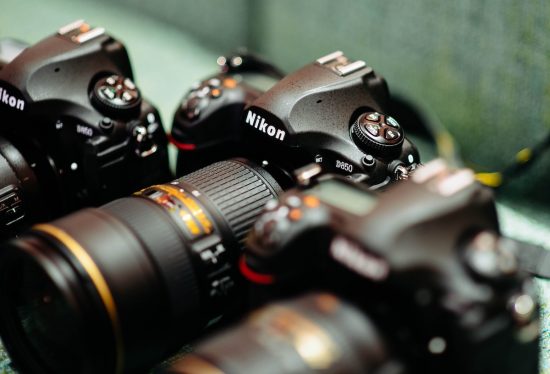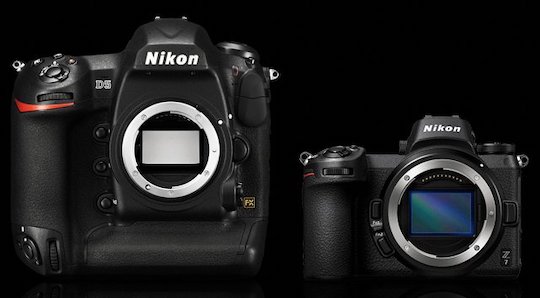
An objective comparison between the Nikon Z and Nikon D series by Klaus Tan (see also his previous guest posts):
An objective comparison between the Z vs the D series
20 months since the launch of Nikon’s first foray into the full-frame mirrorless world, it’s now time to take stock of what’s to love about the Z, or D. Personally acquainted with the D series DSLRs for 7 years by now, the Z’s introduction was a refreshing update that capitalised on groundbreaking innovations. At the same time, it retained many familiar elements that make the camera feel like a friend you never knew you had.
I’ve been an early adopter of the Z – in fact acquiring the first few sets of the Z 6 and Z 7 when they were made available in Singapore weeks after launch. Since then, their prices have dropped significantly as seen in the table below (figures rounded for easier reference).
| LAUNCH PRICE (I acquired at) | CURRENT PRICE | |
| Z 6 + FTZ Kit | SGD3200 | SGD2400 |
| Z 7 + FTZ Kit | SGD5100 | SGD3500 |
Hence, their price points are on par (in some cases, cheaper) than Nikon’s DSLR offerings with similar specifications. Take the D780 and D850 for example, retailing at SGD3000 and SGD3700 respectively (at time of writing).
With the once before differentiating factor of cost set aside, that leaves us with the raw specifications to compare, as quality of image is rather subjective.
Z Mirrorless advantages:
- Silent shutter – Enables a truly discreet photographing experience (compared with the DSLR’s ‘quiet mode’, which merely dampens the shutter sound). Essential help when photographing sensitive situations like events, nature and street photography without distracting / alerting subjects. Vibrations due to shutter actuations are eliminated in long exposures, which proves useful when steadiness is of utmost priority.
- Electronic Viewfinder (EVF) for real time exposure preview of an image. Many have a gripe on the EVF being difficult to get accustomed to, but realise that it’s magical? Especially in poorly lit situations, the guesswork of how exposure would affect an image is eradicated. Whatever you see in the viewfinder is just as the final image would be. Focus peaking too, is included so you won’t have to leave the viewfinder to look at live view on the screen again.
- Overall lightweight Z ecosystem. The Z series cameras and lens even more lightweight, coupled with a remarkably small form factor for greater portability. A simple comparison shows the Z cameras to be at least 30% lighter than their D counterparts, and that’s enhanced by a smaller overall footprint in size. Where I once would fit a D850 with 2 G lenses, I can fit a Z 7 with 3 Z lenses.
- The ability to use XQD and CF express cards. I’ve never looked back after the experiencing the blazing read / write capabilities of these cards. While they’re being implemented progressively in newer D DSLRs, the older models lack the revolutionary speeds of 400mb/s to 1200mb/s. Most SD cards max out at 100mb/s and that’s a very long time to transfer. When using the continuous high mode, writing memory fast would never be more needful and these high performance rates facilitate the clearing of buffer more efficiently.
- Superior autofocus capabilities while shooting video. Times when Nikon’s cameras could never do continual autofocus smoothly are over. The autofocusing is just as swift as in stills mode, and has a supreme edge over the current D systems which hunt in sharp unpleasant jerks. For seamless continuous focus, I had to push and pull focus manually even on AF lenses. With the Z, that task is offloaded to the camera and it does a great job at keeping up.
- Inbuilt 3-axis image stabilisation (IBIS) – In essence, transforms adds VR to any non VR lens, even the manual focus AI-S ones! Elevates the Nikkor f1.4 primes as undisputed kings of low light photography, while complements the capabilities of lenses with inbuilt VR and brings the effective power to 5-axis stabilisation. Either ways, a formidable addition that’s useful in all situations.
- In camera charging via USB C. Enables continuous shooting, power bank charging, less hassle with a physical charger. No more desperately hunting for power sockets; any ubiquitous USB port would suffice.
Points 1-3 are inherent advantages of mirrorless cameras in general, while points 4-7 are being progressively introduced in D DSLRs, equalising their level playing playing field with the Zs.
D series DSLR advantages
- Mechanical shutter – There is nothing more satisfying than to hear the iconic shutter click go ‘ge-rak’ on Nikon’s flagship / professional DSLRs. It breathes superiority, exudes confidence and projects professionalism. Where the Z’s comes across significantly more muted (on the mechanical shutter), the D’s is unabashedly bold and commands attention.
- Optical viewfinder (OVF) greatly conserves battery life. Still missing the days I could go without recharging the D750. I could take out 1300 frames leisurely on a single charge with conservative battery usage, but the Z’s EVF draws quite a fair bit of power, enough to whittle this down to some 700 shots. Low tech solutions to high power consumption problems can be effective!
- Backward autofocus compatibility with D lenses. This is one of the largest reasons why many still love the D DSLRs. The Zs lack a screw-driven autofocus system, and that renders such lenses mountable without focusing support.
- Dual memory card slots, for now. Can’t emphasise how needful the separation of photographs and videos in storage is. Or the ability to use the second slot for backup and overflow memory. This simplifies transferring of files to workstations, where you won’t want different types of media mixed together. Sure, sorting is just one click away but dividing them makes the process more clear cut. And as for backups and overflow, there isn’t any substitute to it when operating with 1 slot.
Ultimately, innovation can be a lonely place. In the process of introducing something revolutionary, there will be customers who still prefer the traditional classical products with their niche capabilities. For the mass market however, the array of features mirrorless promises to bring is irresistible. Preference lends heavier weight whichever models pack greater features, and it seems that mirrorless is leading this race.
I do see a future advancing towards mirrorless cameras, and it’s only a matter of time the DSLRs yield to its unstoppable force. We’ve seen how film has been relegated to the tool of photography purists, hipsters and aficionados – ceasing as a commercially viable product to bring Nikon into the future. Unwittingly, even most members within these groups tout camera-enabled smartphones which are themselves mirrorless in nature. That is the most endearing proof of mirrorless’ ability to pack maximum quality into minimal footprint, and cost.
Innovative creativity can never satisfy one’s customers a hundred percent. Granted Nikon’s grand rapid roadmap of introducing new Z lenses, sometimes in unprecedented configurations – such as the 14-30mm f4, and the 50mm f0.95 – it becomes evident that they aren’t willing to let this moment pass without fully realising its potentials. In the long term, streamlining the product lineup to focus on one system would be most sustainable. The future is 22 alphabets beyond the letter D.

If you have an interesting idea for a guest post, you can contact me here.







